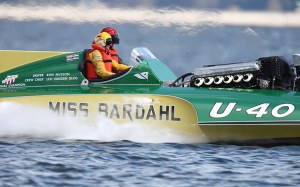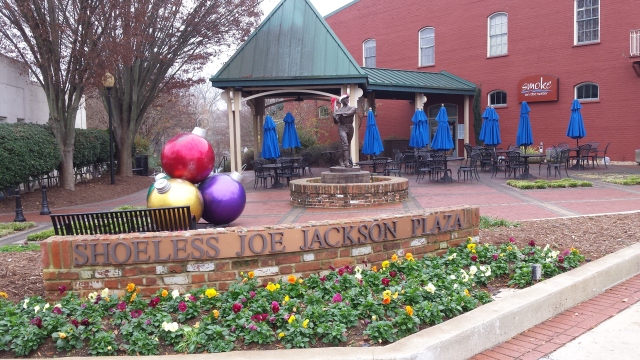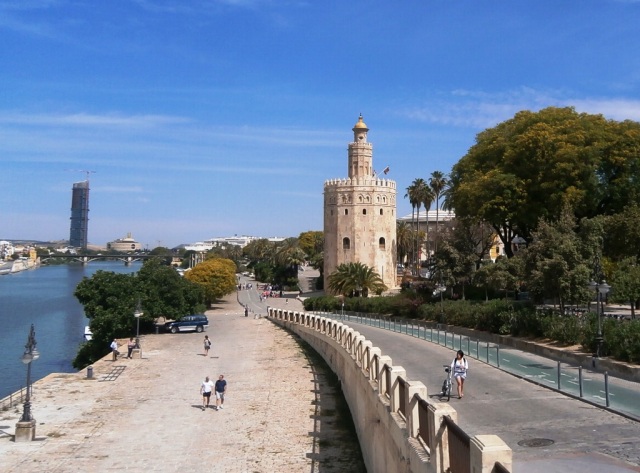
Unlimited hydroplanes racing down the backstretch on Lake Washington.
Photo credit: U-37.com
Note: In July, we will be returning to the United States to begin a new chapter in our travel lives. With this blog, Applecore, I will continue to write about our travel adventures. However, our lifestyle as The 6 Monthers is nearing its conclusion. As our time in Spain comes to an end, I have begun contemplating our next destination – the return to my home state of Washington. Inspired by memories of my younger days, this story is the first in a series looking back on my experiences growing up in Seattle.
Much of this story will be news to newcomers to the Seattle area, those who came within the last 40 years. It was a time before Seattle had the NFL Seahawks, the Major League Mariners, or an NBA franchise like the now defunct Supersonics (now known grudgingly as the Oklahoma City Thunder). We had the AAA baseball Seattle Rainiers who played at Sicks Stadium, located on Rainier Avenue where a Pepsi Cola warehouse now sits. We also had the Western Hockey League Seattle Totems who played at the Civic Ice Arena, now known as the Seattle Center Arena. However, these were minor diversions for sports fans. There was only one sport that owned Seattle during my youth in the 50’s and 60’s – unlimited hydroplane racing.

Hometown favorite, Miss Bardahl won the National Championship in 1967 and ’68.
Photo credit: Seattletimes.com
In 1947, a national racing circuit was established for unlimited hydroplanes. They were powered by V-12 Allison aircraft engines surplused after WWII. The Allison’s were gradually replaced with V-12 Rolls-Royce Merlin aircraft engines, the ones that powered the British Spitfire fighter planes. Generating over 1,000 horsepower, these extremely loud aircraft engines were what led to nicknaming the hydros as ‘Thunderboats.’ Even where I lived south of the city near Burien, I could hear the Thunderboats from my home five miles from the Lake Washington racecourse.
Why was unlimited hydroplane racing so big in Seattle? Other than no big-time sports in the city, the lakefront along Lake Washington was, and still is, public park land. It was an ideal setting for a daylong summer outing for the whole family. The fans, who enjoyed swimming and picnicking between racing heats, turned out by the hundreds of thousands. There was also a floating log boom installed along the backstretch of the racecourse. To this day motorboat enthusiasts moor side-by-side to form a mile long flotilla of partying race fans. Annual attendance estimates in the 50’s were around 400,000 people for the hydroplane races – almost half the population of the Seattle Metropolitan Area at the time.

The U.S. Navy is popular in the Puget Sound region, and their Blue Angels are a Seafair fixture on race day.
Photo credit: Seattlepi.com
One great legend from this era was that of test pilot, Alvin ‘Tex’ Johnson. Originally from Arkansas, he acquired the nickname ‘Tex’ from his penchant for wearing a Stetson and cowboy boots on the flight line. He came to Boeing from Bell Aircraft, where he piloted, among other prototype aircraft, the rocket-propelled X-1, which pioneered the breaking of the sound barrier. At Boeing, Johnson, the first pilot to fly the B-52 Stratofortress, sealed his legend when he flew the prototype Boeing 707 over the Lake Washington hydroplane racecourse on race day and performed a barrel role directly overhead of thousands of awestruck onlookers. This risky maneuver, never before attempted in a four engine passenger jet, was captured on film. (Click here for the brief video.) The story goes that Tex was called before then Boeing President, Bill Allen, and asked what the heck he thought he was doing, to which Tex replied, ‘I’m selling airplanes.’ And that is exactly what he did. Orders for the 707 came pouring in after his stunt, and Johnson was never fired, suspended or fined.
Other legends arose from the early hydroplane days. Col. Russ Schleeh, who left his career as a test pilot to drive the old Shanty I hydroplane, is still the only hydroplane driver ever to get his photo on the cover of Sports Illustrated (September, 1957). Old time race fans will remember the 1950 Slo-Mo-Shun IV driven by Stanley Sayres that set a world water speed record of 160 mph breaking the 11 year old record by almost 20 mph. Two years later the same boat set a new record at 178 mph.
On race days the ‘Slo-Mo’ used to stop traffic on the Lake Washington Floating Bridge as it left its owner’s private dock near Leschi Park, a mile north of the racecourse. It would race under the west high rise of the bridge and time its approach to the starting line going 160 mph as the starting gun sounded. The running start was halted when the rules were changed requiring all boats to start from and return to the pits.

Unlimited hydroplane racing is inherently dangerous. Even the modern aerodynamic boats can get airborne at high speeds.
Photo credit: Seattletimes.com
Other early hydroplane drivers were household names in Seattle: Mira Slovak – The Flying Czech (who escaped Communist Czechoslovakia as an airline pilot who diverted his commercial flight to Luxemburg), Dean Chenowith, Ron Musson and Bill Muncey. Slovak was the only one of these drivers not killed in competition before safer boat designs were instituted.
My most vivid memory of the hydroplane races was standing on the shore of Lake Washington in 1969 as six Thunderboats came across the starting line. They came roaring straight toward me side-by-side at 150 mph as I stood waist deep along the shore near the first turn. Imagine seventy-two un-muffled combustion chambers exploding with aviation fuel as the boats spit out roostertail wakes fifty feet high. The sound was so loud that it pulsed through my bones like a hundred sub-woofers cranked to the max at a KISS concert. I have never experienced such total immersion in sensory overload as I did at that moment.
Beginning in 1980, unlimited hydroplanes began using Lycoming T-55 turbine engines. Initially built to power Chinook helicopters, these engines produced over 3,000 horsepower. The safer design of updated hydroplanes incorporate space age components, advanced aerodynamics, and enclosed cockpits. As fast and powerful as these boats are, now easily reach speeds in excess of 200 mph, their high-pitched turbines can never replace the excitement and sensation of the classic Thunderboats.
Seattle’s annual Seafair celebration still culminates with unlimited hydroplane races on Lake Washington, and the races are still a great extravaganza. Every year over a quarter million people line the course to watch the races. However, with so many sports options available, hydroplane racing in Seattle will never regain the unique excitement once provided by the Thunderboats whose tradition is kept alive only when there is a demo race of the classic hydroplanes. What remains of the Thunderboats are museum pieces which can be viewed at the Hydroplane and Raceboat Museum in Kent, Washington.

The Legends: U-4 Miss Burien, Chuck Hickling
U-40 Miss Bardahl, Norm Evans (later drivers: Billy Schumacher, Mira Slovak, Jackie Regas and Ron Musson)
U-60 Miss Thriftway, Bill Muncey – winningest driver in unlimited hydro racing history (62 victories)
U-6 Oh Boy! Oberto, Buddy Byers (later, Jim McCormick)
U-77 Miss Wahoo, Mira Slovak
Photo credit: waterfollies.com
Note: For more reading about the Thunderboats, click here for another story I ran across by another Seattle old-timer with his own take on the classic hydroplanes.


 Just south of Greenville City Hall in front of the old County Court House (now the M. Judson Bookstore) on S. Main Street sits a bronze statue of Joel Roberts Poinsett (1779-1851). Born in Charleston, SC, son of a wealthy physician, Poinsett was a physician, statesman and diplomat.
Just south of Greenville City Hall in front of the old County Court House (now the M. Judson Bookstore) on S. Main Street sits a bronze statue of Joel Roberts Poinsett (1779-1851). Born in Charleston, SC, son of a wealthy physician, Poinsett was a physician, statesman and diplomat.












































